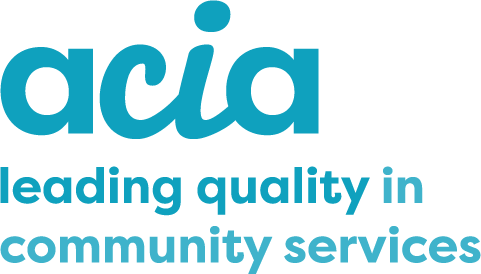- Disasters & Emergencies
- Service provider preparedness
- Participant preparedness
- Risk assessment and
intervention plan
Participant preparedness
- Introduction : Preparing Participants
- Helping Participants prepare
- Red Cross: Redi Plan
- PDCN: I'M OK
Preparing participants for disasters and emergencies
Are Participants prepared for disasters and emergencies?
Preparing Participants disasters and emergencies is really important as it can enable people to avoid risks.
It is helpful to plan what actions can be taken beforehand as it can be challenging to determine what to do in the midst of an emergency. This is because emergencies can be very stressful and people’s usual means of communication to access information and support may not be available.
For community organisations it is important to:
- Identify vulnerable Participants
- Identify priorities for preparing Participants
- Identify ways you and your team can incorporate preparedness activities with your Participants in your day to day work.
This section includes suggestions and tools for helping Participants prepare for disasters and emergencies.
For some Participants it may be important to do a formal risk assessment and develop an intervention plan. See Risk Assessment and Intervention Plan.
Participant Preparedness Ideas
Here are some ideas about how to help Participants prepare:
- Help them develop a household or personal emergency plan (many community organisations include this as a standard part of their service provision now, you should too!)
- Support community-led preparedness initiatives
- Create a buddy system in the community that pairs people with trusted local community members who can assist them in an emergency
- Support them to develop stronger relationships within their community
- Assist them to create an emergency kit
- Develop their skills to be able to stay informed during an emergency, such as how to find information about bushfires, heatwaves, cyclones and floods
- Provide them with strategies to keep cool during heatwaves
- Remind them to replace their smoke alarm batteries
- Help them to write down their emergency contact numbers in a visible location
Remember:
Foster resilience by encouraging your Participants to find their own solutions where possible rather than creating expectations of assistance from your organisation or emergency services.
Where your support is essential, carefully consider any commitments you make to Participants to support them during an emergency; it isn’t helpful to make promises you can’t keep.
There are two resources that will be useful for Participants:
Red Cross REDiPLAN
Physical Disability Council of NSW I'M OK
Why REDiPlan?
Go to the REDiPlan website to learn more.
It includes a REDiPlan specifically written for people with disabilities and their familieswhich includes:
- Step 1: Be informed
- Step 2: Make a plan
- Step 3: Get an emergency kit
- Step 4: Know your neighbours
- Workbook: Household emergency plan
We recommend REDiPlan resources because they are:
- Designed with lots of community consultation, experience and knowledge from experts and disaster-affected people here in Australia, and through their international networks too
- Designed for all-hazards
- Relevant for each state and territory
- Are very easy to follow and easy to read
- Easy to order
- Red Cross volunteers can come to your organisation to explain the resources
4 Steps
The REDiPlan has four easy to follow steps:
- Get in the know
- Get connected
- Get organised
- Get packing
Why I'M OK?
Go to the I'M OK web site to learn more.
We recommend I'M OK because it has been developed by the Physical Disability Council of NSW (PDCN).
Its resources include:
Why be emergency ready?
Being emergency ready is extremely important. It reduces the vulnerability of individuals with disability, when faced with an emergency situation.
This section highlights the importance of people with disability being ready in the eventuality of an emergency situation including fires, bush fires, storms, flooding and personal protection.
Action Plan Steps
This section provides a step by step guide into what people with disability should consider when creating an emergency action plan.
PDCN has worked collaboratively with emergency services to provide practical, up to date information which will enhance the knowledge and capacity of people with a physical disability, to increase their ability to respond to an emergency situation or disaster.
Tools and Resources
This page provides links to various tools and resources available from a range of organisations.
We have divided information into sections relating to various emergency situations including; bush fire, storm, fires in the home, personal safety.


